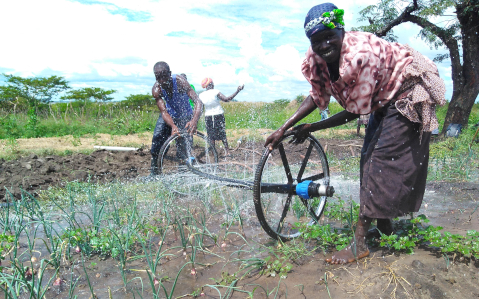Farmer preferences for small-scale irrigation technologies in Uganda
Irrigation is an important strategy in addressing persistent and increasing challenges in agricultural development in East Africa. Only about 2% of cultivated area across Uganda, Kenya, and Tanzania are under irrigation; yet that 2% produces approximately 20% of total agricultural output–signaling the potential for irrigation to play an important role in improving lives and livelihoods in this region.
There is a growing recognition that the barriers to irrigation development for millions of smallholder farmers are as diverse as the farmers themselves, spanning domains of technology, economy, social norms, and culture. This includes attending to the distinct needs of women farmers, who have been shown to experience different constraints, to and benefits from, irrigation than their male counterparts.
In this project, we aim to understand how irrigation technologies and social institutions manifest specific outcomes for women and men farmers within the local context of gendered norms in agricultural labor.
Using data from a survey conducted with nearly 100 farmers who participated in the Innovations in Dry Season Horticulture program, this project explores differences in the perceived benefits and effectiveness of small-scale irrigation technologies and social institutions among men and women farmers.

Farmers irrigating in Serere District, Uganda. Photo: Abraham Salomon
Funding
◊ US AID Feed the Future Innovation Lab for Horticulture
◊ Global Fellowships for Agricultural Development, UC Davis College of Agricultural and Environmental Sciences
TEAM
Betty Ikalany, TEWDI Uganda
Helen Acuku, TEWDI Uganda
Kate Scow, University of California, Davis
Abraham Salomon, University of California, Davis